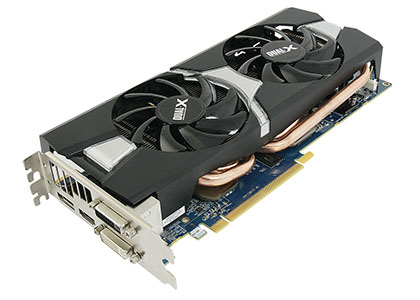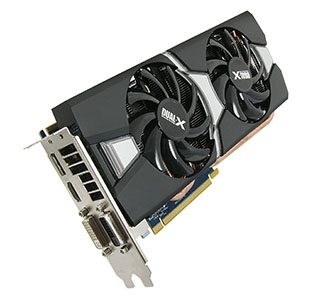New price and name for older technology
AMD rolled in another premium GPU earlier this month without too much fanfare. The Radeon R9 280 3GB is, by and large, a 2012-era Radeon HD 7950 that goes by a different name. Priced from £200 and available from a select band of etailers, this new GPU debuts at about half the cost of its predecessor.
Those familiar with the workings of an HD 7950 will know the R9 280 specification drill. 1,792 shader cores running at a maximum 933MHz and a 384-bit memory bus interfacing with 3GB of 5Gbps-rated memory. This GPU represents a miniscule performance improvement over the latest iteration of the HD 7950 known as Boost and clocking in at a peak 925MHz core, but both can be considered one and the same.
Rebranding concerns aside, Radeon R9 280 is full of gaming pedigree, particularly if you play at a 1080p resolution and want to indulge in the highest in-game quality settings.
Owing to the close proximity of Radeon R9 280X pricing, which is £30 more, Sapphire sensibly opts for the cost-effective Dual-X cooler on this card. It is exactly the same as found on the X model, meaning dual-fan cooling helped by a card-wide heatsink that has four heatpipes - two thick, two thin - running through it.
Measuring 10.5in (262mm) long and presented in the usual dual-slot form factor, Sapphire also includes thermal pads for all but one of the memory chips and, probably more importantly, has a small heatsink covering the VRM components situated directly below the right-hand fan.
This is a proven design that has cooled well-overclocked GPUs in the past, so it's a little surprising that Sapphire's peak speed, made available by Boost technology, is 940MHz, or just 7MHz above AMD reference specs. Note the guaranteed minimum speed is 850MHz, however. We examined a 10-minute gaming section and observed the core's average speed was 922MHz in Far Cry 3.
Memory speed, meanwhile, is a standard 5Gbps. Most add-in board partners refrain from overclocking memory on the first-rung OC cards because RAM chips are often sourced from multiple vendors: Hynix is the provider in this particular instance. Screening for higher speed would, in most cases, require too much testing for it to be cost-effective on a Dual-X variant.
Aesthetically, the blue PCB is at style odds with the black-and-silver cooler. The board is very likely taken directly from one of the existing Radeon HD 7950-series family and flashed to an R9 280. A 3GB framebuffer and decent underlying oomph makes this £200 card a good choice for, say, a £750 base unit that's paired to either a 1080p or 1440p-resolution monitor.
Power delivery depends upon the Dual-X model you receive. Some, like the review sample, are outfitted with two 6-pin PCIe connectors while others, using a derivative PCB, have an 8+6-pin arrangement.
Sapphire's previous FleX cards supported four concurrent displays. Though still plumbed with the usual quartet of two dual-link DVI, HDMI and DisplayPort, only three outputs can be run at one time. This isn't a huge deal for gaming, as Eyefinity works best in a three-screen format, but may cause the odd issue for those looking towards maximum real estate for productivity reasons.
The real question is whether an overhauled Radeon HD 7950 Boost still make sense in 2014? Let's find out by running the numbers.













